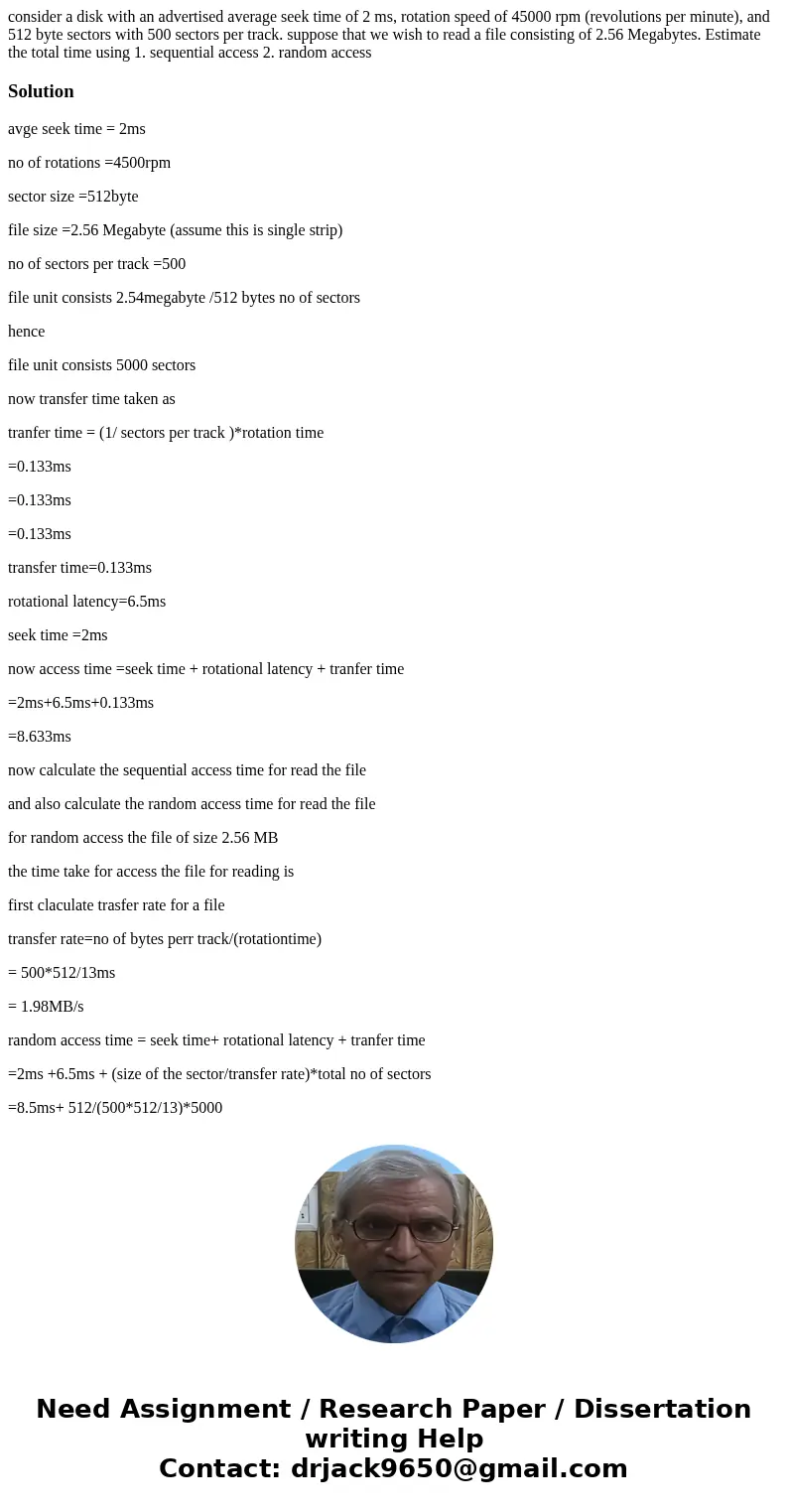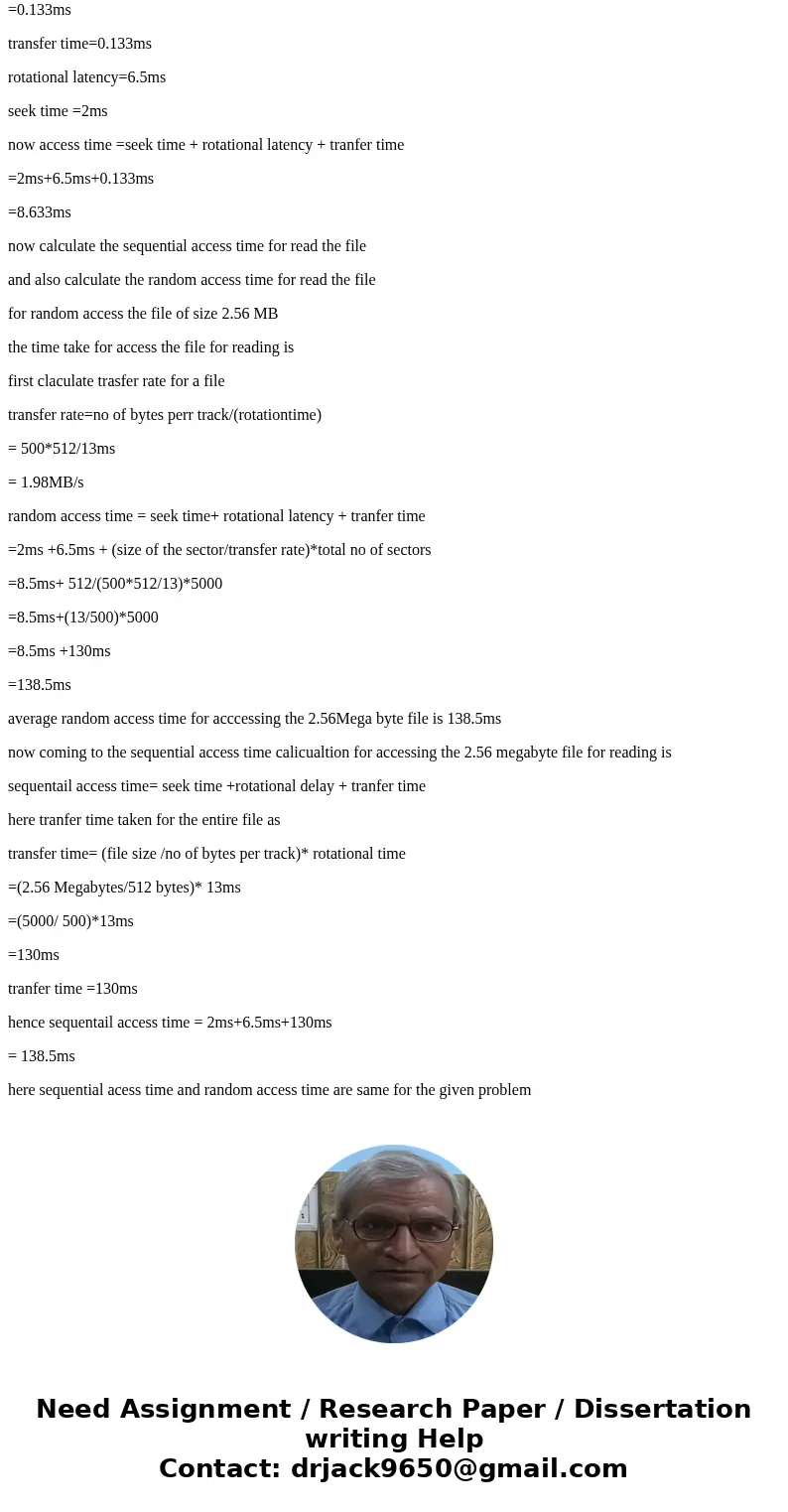consider a disk with an advertised average seek time of 2 ms
consider a disk with an advertised average seek time of 2 ms, rotation speed of 45000 rpm (revolutions per minute), and 512 byte sectors with 500 sectors per track. suppose that we wish to read a file consisting of 2.56 Megabytes. Estimate the total time using 1. sequential access 2. random access
Solution
avge seek time = 2ms
no of rotations =4500rpm
sector size =512byte
file size =2.56 Megabyte (assume this is single strip)
no of sectors per track =500
file unit consists 2.54megabyte /512 bytes no of sectors
hence
file unit consists 5000 sectors
now transfer time taken as
tranfer time = (1/ sectors per track )*rotation time
=0.133ms
=0.133ms
=0.133ms
transfer time=0.133ms
rotational latency=6.5ms
seek time =2ms
now access time =seek time + rotational latency + tranfer time
=2ms+6.5ms+0.133ms
=8.633ms
now calculate the sequential access time for read the file
and also calculate the random access time for read the file
for random access the file of size 2.56 MB
the time take for access the file for reading is
first claculate trasfer rate for a file
transfer rate=no of bytes perr track/(rotationtime)
= 500*512/13ms
= 1.98MB/s
random access time = seek time+ rotational latency + tranfer time
=2ms +6.5ms + (size of the sector/transfer rate)*total no of sectors
=8.5ms+ 512/(500*512/13)*5000
=8.5ms+(13/500)*5000
=8.5ms +130ms
=138.5ms
average random access time for acccessing the 2.56Mega byte file is 138.5ms
now coming to the sequential access time calicualtion for accessing the 2.56 megabyte file for reading is
sequentail access time= seek time +rotational delay + tranfer time
here tranfer time taken for the entire file as
transfer time= (file size /no of bytes per track)* rotational time
=(2.56 Megabytes/512 bytes)* 13ms
=(5000/ 500)*13ms
=130ms
tranfer time =130ms
hence sequentail access time = 2ms+6.5ms+130ms
= 138.5ms
here sequential acess time and random access time are same for the given problem


 Homework Sourse
Homework Sourse